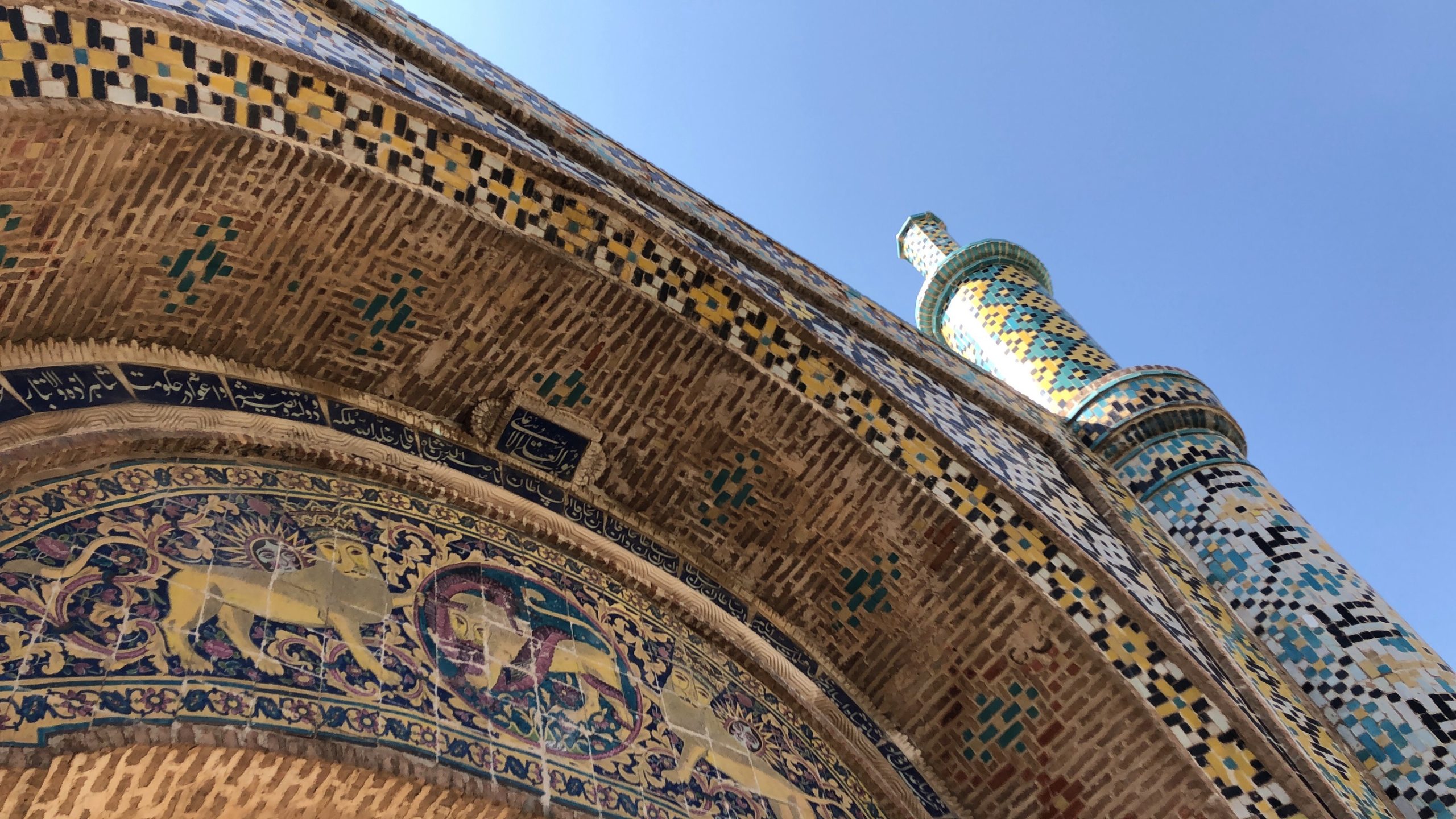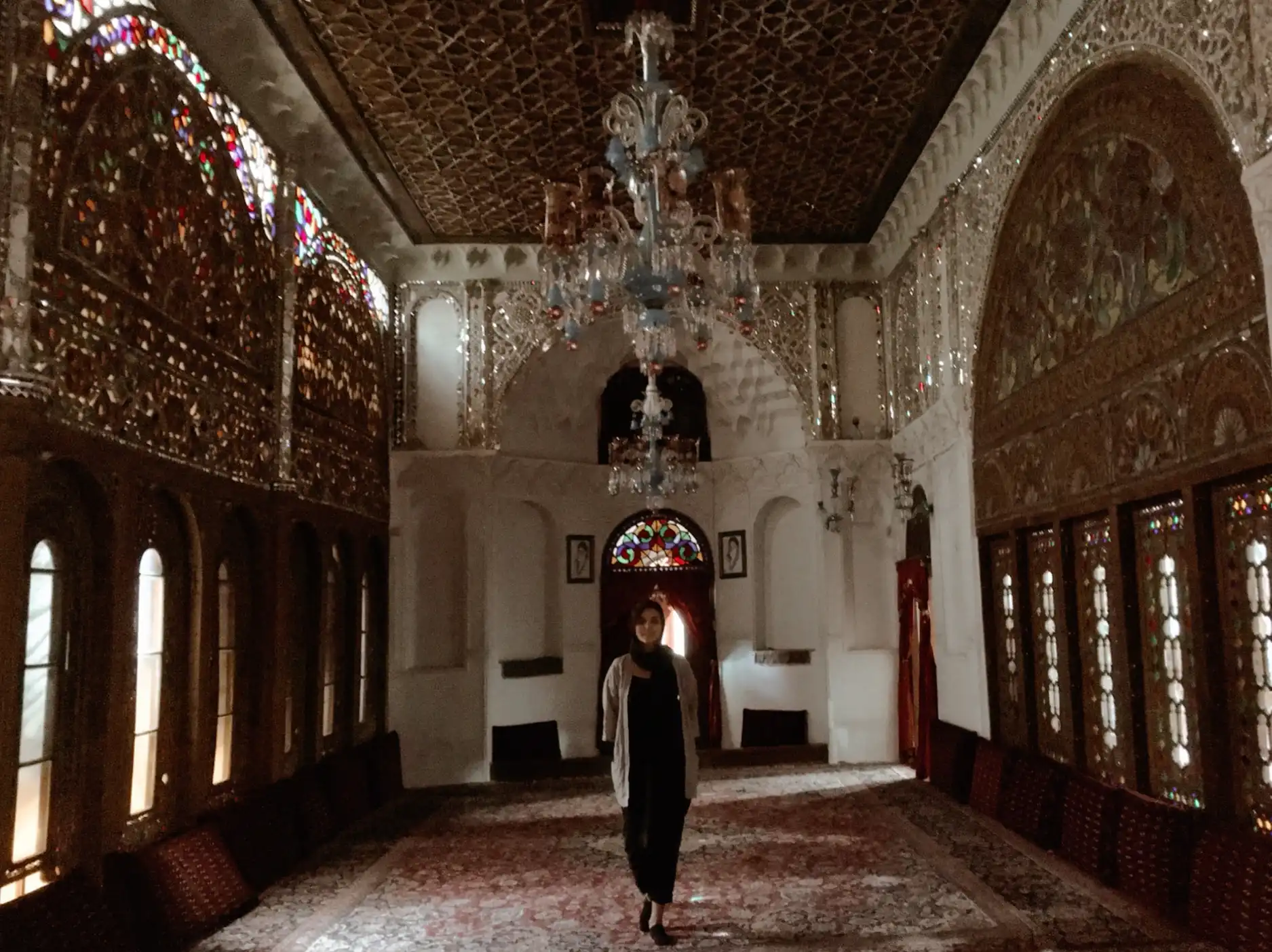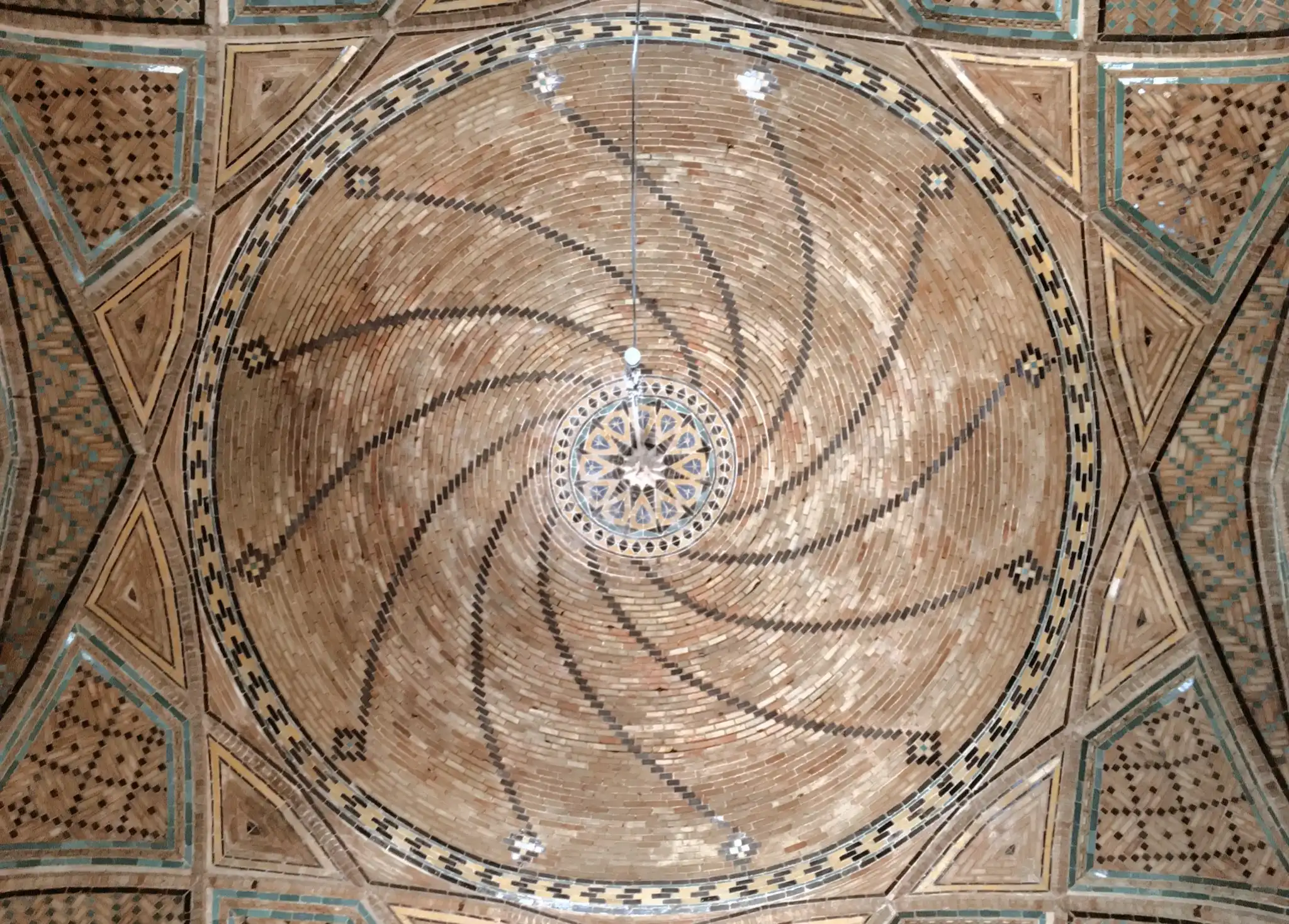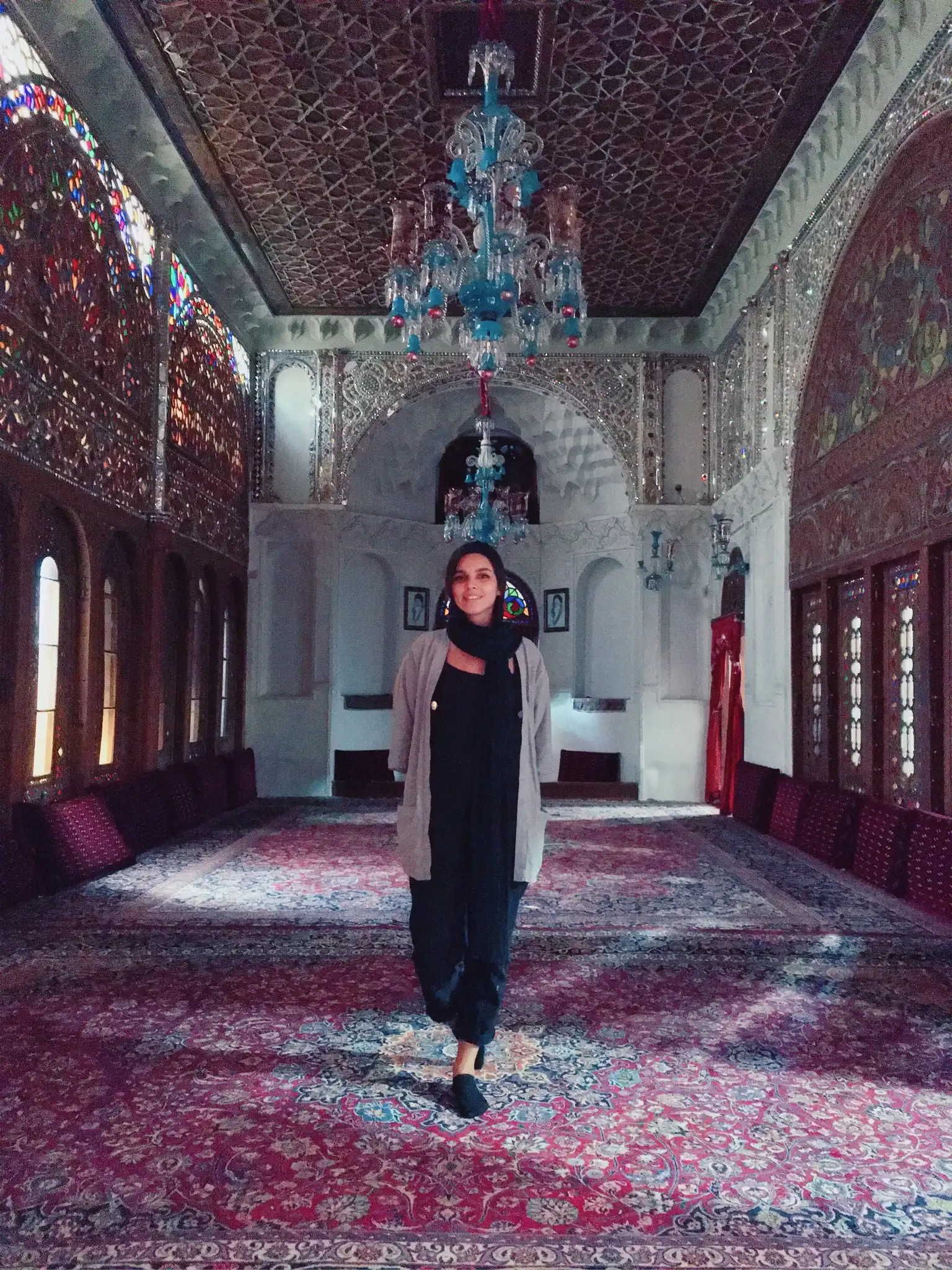

On the first day of my 75-day journey, I began with Qazvin, a pleasant and temperate city known for its extraordinary caravanserais, peculiar museums, and its fame for carpet weaving, calligraphy, and seedless grapes. It was once the capital of all of Iran, renowned for its firsts and bests, such as Sa’d al-Saltaneh Caravanserai, the largest inner-city caravanserai in Iran, Nabi Mosque, one of Iran’s largest mosques, Sardar Ab-Anbar, the largest single-dome cold water reservoir in Iran, and Alamut Castle, one of the most beautiful valley castles in Iran.
Qazvin opened its historical chapter in the 3rd century with the Sassanian kings. During the Seljuk rule, it gained more prominence through the construction of magnificent buildings. And when Iran’s capital was moved from Tabriz to Qazvin during the reign of the second Safavid king, it reached the pinnacle of its fame and importance for the second time.
The high-flying architecture and designs of the Safavids in Qazvin were not just for fashion; they were a warm-up exercise for Isfahan, where their successors established their castles.The high-flying architecture and designs of the Safavids in Qazvin were not just for fashion; they were a warm-up exercise for Isfahan, where their successors established their castles.
During the Safavid era, Shah Tahmasb moved the capital to Qazvin due to its proximity to the Ottomans, and he ordered the construction of a square garden with magnificent palaces and halls. This cube with columns and allure was the royal palace of Shah Tahmasb. During the Qajar period, all the paintings and wall decorations were buried under layers of plaster and paint, and Qajar patterns took their place.
This was the first time I realized that to find the history of Iran, one must look between the layers of the walls because most of what belonged to or disappeared from previous kings was either erased or buried.
This palace is the only survivor of the 21 grand palaces and gardens built at that time, and it is now known as the Calligraphy Museum of Qazvin.
The second place that captivated me in Qazvin was the Aminiha Historical House. It’s a Qajar-era mansion with 16 rooms and four large courtyards. Despite all the alterations and wear and tear, only one house and four courtyards remain. This mansion belonged to Mohammad Reza Amini, a prominent figure in Qazvin, and the construction of this extraordinary architectural masterpiece took 27 years.

As I set foot on the red carpets and the ancient tilework of the Holy Shrine of Razavi, I marveled at the celestial ceiling with moon and sun motifs and crystal chandeliers from Italy with a 165-year history. The colorful glass, which few may know, was exported from Iran to China 2000 years ago.
In one of the halls, I encountered the world’s most exceptional lighting engineering with two angels facing each other. One was adorned with a sun pattern, and the other had symbols of the 12 months. Depending on the changing sunlight throughout the year, every time the sun shone on a solar panel, it lit up the exact symbol of the corresponding month, illuminating its beauty.
I know that if you see this magnificent and enchanting mansion, you will never forget it.
If you visit Qazvin, be sure to explore the Qeysariyeh Bazaar, a bazaar with a history of more than a thousand years that has witnessed many ups and downs. What remains of it today is a part of the bazaar with brick walls and high arches, where wandering through its winding alleys and interconnected stalls offers a delightful experience.
Not far from the Qeysariyeh Bazaar, I arrived at AlnabiMosque with its colorful enamel tiles, another architectural legacy from the Qajar kings. The combination of the dome architecture and the unique Qajar-style tilework is exceptional.

One of the interesting sites in Qazvin is the abandoned Zoroastrian Fire Temple. This place, once a Zoroastrian place of worship, tells the tale of time and transforms into the Heydariyeh School. Its mihrab and decorations are among the most precious examples of Iranian gypsum work. The intricate gypsum patterns, alongside the simplicity of the bricks, create a captivating environment that you won’t easily forget.
After a full day of exploration in Qazvin, enjoying the city’s special and delicious food, I ate Qeimeh Nesar and left through the Kushk Gate with its yellow and turquoise tiles, which once embraced or bade farewell to the city’s travelers.
Today, at 7:00 pm on September 13, 2020, I bid farewell to the city of Qazvin and headed towards Zanjan, a city where I had the most heartwarming encounters and the most bittersweet farewells.
Qazvin, a charming city, boasts a beautifully restored caravanserai transformed into an arts district, an array of unique museums, and several delightful dining venues. Renowned for its exquisite carpets and seedless grapes, this city was once the capital of Iran.

Where Imagination Knows No Bounds, and Every Stroke Tells a Tale.
1
Chaoyang D, BaliZhuang,
Beijing, China
+86 136 8334 4984